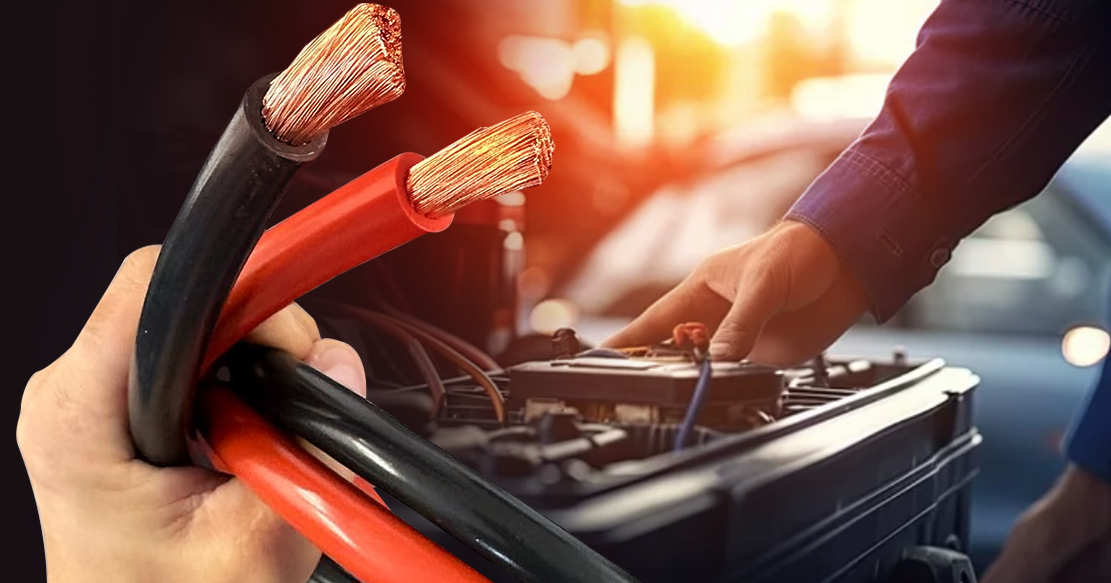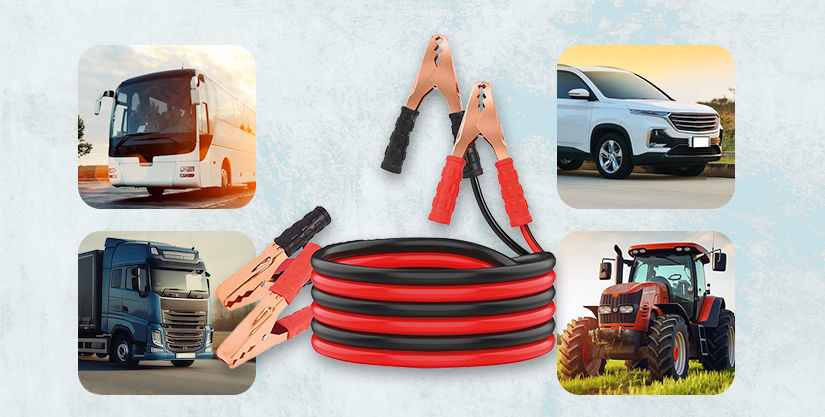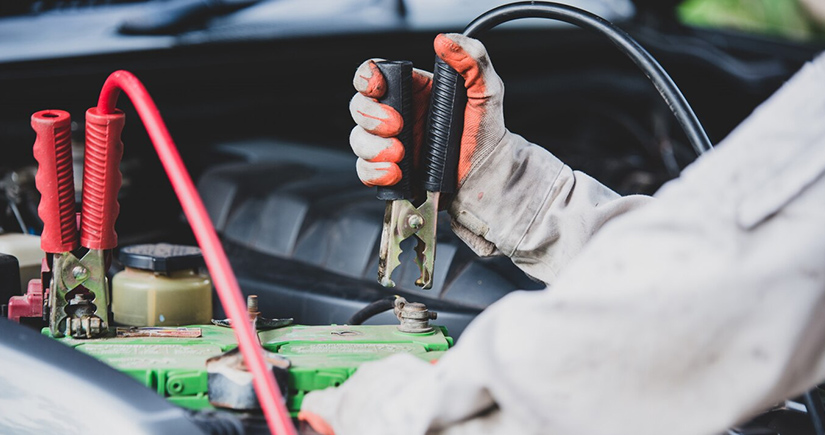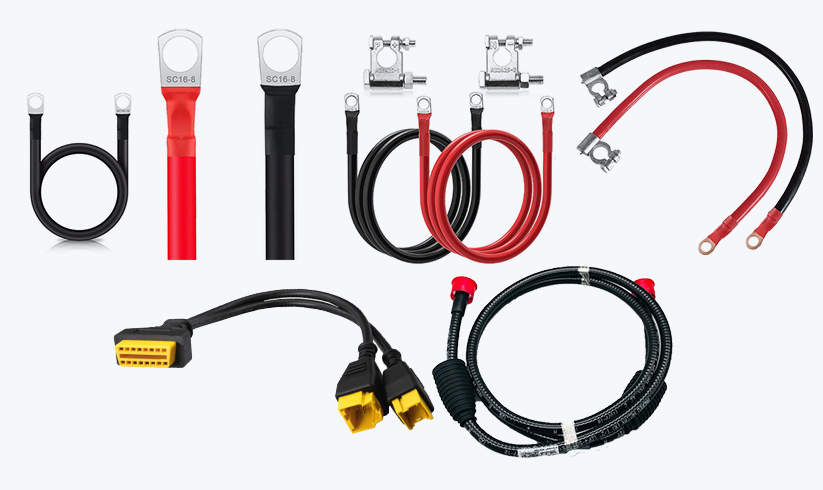
An Overview to Battery Cables and Their Specification
Connecting a battery to a starter or any electrical system requires a cable. A battery cable specifically designed for batteries is a safe and secure connection. Battery cables are usually thicker than other cables with a higher AWG number.
Battery cables use solid copper or strand or braided copper. The design allows for maximum conductivity while protecting from damage. Its robust and heat-resistant insulation helps to withstand damage from fuel, oils, chemicals, and high temperatures. The cable has high mechanical strength and excellent flame-retardant properties.
Gloster cables construct battery cables following specific industrial standards and tests to give them excellent mechanical, chemical, and electrical properties.
What is a Battery Cable and How it Differs from Welding Cables

Battery cables are specially designed cables for batteries and electrical system usage. These cables differ from general-purpose cables for connecting devices to a power source. They can efficiently connect a battery to its starter, often found in buses, cars, trucks, RVs, and tractors.
Battery cable is a rigid single-conductor wire made from heavy gauge copper. These cable-as- wire assemblies provide direct power to an engine or other electro-mechanical devices from the battery. These cables are insulted with PVC or XLPE and are usually rated to 60V DC.
How Battery Cables Differ from Welding Cables
Welding cable and battery cable share a few similar characteristics, but they differ. Welding cables are more flexible than battery cables. Battery cables are rigid and resistant to high temperatures and hazards like oil and gas. Welding cables get insulated with synthetic rubber, like EDPM and neoprene.
We can use welding cables as battery cables, but battery cables are not suited for welding applications. They cannot meet the high-voltage and flexibility requirements of welding. The application of automotive battery cables in higher voltage applications can be dangerous.
Battery Lead Working and Application
The parts of a battery cable are sometimes referred to as battery leads. A battery cable features a positive lead and a negative lead. The positive lead connects to the ignition. The negative lead grounds and connects to the chassis.
A lead-acid battery uses lead and sulphuric acid to produce electricity. The lead submerged in the sulphuric acid creates a controlled chemical reaction to produce electricity. The battery Customized for The Gloster Cables and subject to change by Content Inception. plates are usually of lead and lead dioxide. They undergo chemical reactions during the charging and discharging processes of the battery.
Battery Cables for Automotive Application
Battery cables are frequently in use for automotive applications. And they are usually rated to 60V DC. These cables are insulated and flame retardant, which makes them suitable for application. The outer jacketing of the cable protects it from environmental hazards, including oil, fuel, water, lubricants, and acid. These cables can withstand moderately high heat. We can use automotive battery cables for marine applications and other industrial functions.
Specifications of Battery Cables

Construction of Battery Cables
The cable structure mainly includes a conductor, separator, and sheathing.
Conductor
The cable uses flexible bare copper class 5 and class 6 conductors complying with SAE J1127 VDE 0295, IEC 60228, IS 2465, and BS 6862.
Separator
The separator is of Polyester tape over the conductor.
Insulation
Thermoplastic elastomer, HR PVC, and HOFR are used for insulation.
Sheathing
The cable uses rubber compound or PVC for sheathing.
Cable Standards
The rubber cable complies with standards such as BS EN 50525-2-81, VDE0250 BS EN 60332- 1-2, and BS EN 62230.
Cable Characteristics
The technical characteristics of the cable are
 Voltage Rating
Voltage Rating
The voltage rating for the cable is of max 200V. The nominal voltage is 300V, and the test voltage is 2000V.
 Temperature Rating
Temperature Rating
The temperature rating for fixed cables is -40°C to +85°C and for flexible cables are -20°C to +85°C.
 Minimum Bending Radius
Minimum Bending Radius
The minimum bending radius for heat-resistant PVC insulated battery cables is 7x cable diameter. For HOFR extra-flexible battery cables, the minimum bending radius is 6 x cable diameter.
 Sheath Colour
Sheath Colour
The sheath color is red and black.
Types of Battery Cables

The list of different types of battery cables is as follows.
 SGR Battery Cable
SGR Battery Cable
SGR battery cables feature flexible synthetic rubber insulation with a stranded bare copper conductor. The cable has a temperature range of 40 degrees Celius to +105 degrees Celsius. The voltage rating of the cable is 50V. SGR cable is primarily suitable for automotive applications and marine and RV.
 SGT Battery Cable
SGT Battery Cable
SGT battery cables have PVC insulation with stranded bare copper conductors. It is suitable for use in temperatures between minus 40 degrees Celsius and 105 degrees Celsius and available in gauges between 6AWG and 4/0 AWG. The wire has fewer and thicker conductor wire strands, making it relatively stiff and holding its shape post-installation. These cables are mostly found in battery ground and starter circuits.
 SGX Battery Cable
SGX Battery Cable
SGX cable has XLPE insulation and a stranded bare copper conductor. These cables are similar to other battery cables and have a voltage rating of 50V with a broader temperature Customized for The Gloster Cables and subject to change by Content Inception. range of -40 degrees Celsius to +125 degrees Celsius. In contrast to SGT and SGR cables, SGX cables are strongly resistant to aging and abrasion.
 STX Battery Cable
STX Battery Cable
STX cables come with XLPE insulation and a stranded bare copper conductor. It features a thinner wall, making the cable more flexible and ideal for tight automotive applications. The cable is suitable for heavy current automotive applications and high under-bonnet temperatures of modern vehicles. Its working temperature ranges from -40 degrees Celsius to 125 degrees Celsius.
 SGW Battery Cable
SGW Battery Cable
SGW cables have heat-resistant XLPE insulation. The insulation can withstand high bonnet temperatures up to 125 degrees Celsius. These cables are more flexible than other types because of the higher number of smaller wire strands used in construction. These cables are similar to SGT cables. However, they need full support.
Customize Battery Cables to Meet Specific Application
Battery cables possess excellent mechanical and electrical properties with excellent flame- retardant properties. Gloster Cables, a well-known wire and cable manufacturer, brings battery cables of different types, such as SGX, STX, SGR, SGW, and SGT. These cables are sheathed with rubber polymer to increase their mechanical strength and durability. At Gloster, you can customize these battery cables to meet your specific requirements.
CONTACT US